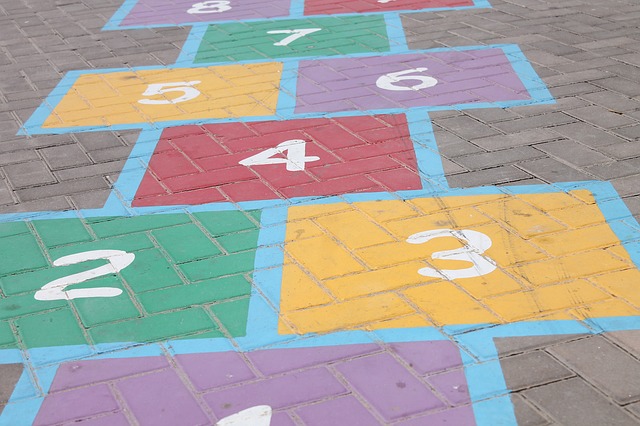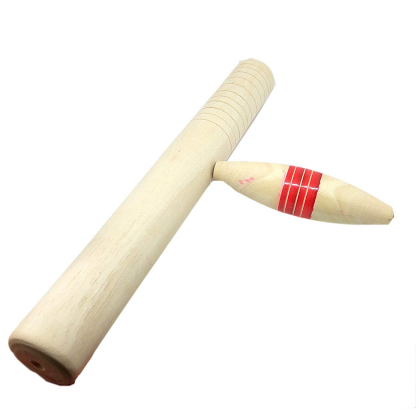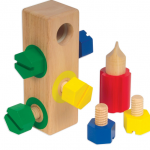Ten traditional games of India – Who doesn’t like to play? We all love games. Kids these days are very busy with games. But they play digital games. They are stuck to the computer, phone or the play station. It is very seldom that they go out to play.
While, even if they play out door games they look for gadgets and covers or special uniforms. They are addicted to technology driven games. Getting dirty or climbing trees are not something they like to do.
As kids we all have enjoyed playing games which did not need many sophisticated instruments. The traditional games are very simple to play and interesting. So let us look at the popular, ten traditional games of India.
The things needed for these games can be found around the house easily. No extensive use of technology is required. There are many games which do not even require any toys or gadgets, just friends to play with.
India has been and will continue to be the land of innovations. In the field of games too we have made innovations. There are so many traditional games which can be played with just about nothing. Only presence of participants is needed. It is up to us to re-introduce these games to the kids and bring back their interest into these traditional games. These traditional games help keep the kids off the screen and make them active.
Ten traditional games of India
Here are a few traditional games that most of us would be familiar with.
Chupa Chupi / Chuppan Chupai # 1
This is first in my list of ten traditional games of India. Games like chupa chupi / chuppan chupai now known as hide and seek is very old for the Indians. It is commonly known as Aankh Micholi as well. Only the players are needed and no other requirement except a place where people can hide. One person is going to be the fetcher and all the others hide.

He/she will then count to ten with eyes closed. Then he/she will start finding all the others. This game makes the kids use the space around the wisely and look at things from a new angle. They try to hide in the non-obvious spots so that they are not caught.
Also, the one who is catching others has to be attentive; so that no one else comes from behind to touch him before he catches them. The attentiveness of the kids is enhanced with this game. Another benefit is that, they use their senses very well. They use sense of sight to look far off. Sense of hearing to listen and find the others by the slightest of the movement. Kids become alert of their surroundings. They learn to hypothecate and think about the possible place where others could hide.
Ludo/Chaupar/ chausar/ pachisi #2
Ludo/Chaupar/ chausar/ pachisi: it is a very commonly known game in India and second in my list of Ten traditional games of India. It has been there since the Pandavas and even before. It was a game that the kings and their friends used to play to pass time. It has two or four players. The moves of the pawns are done strategically on a cross made of cloth. The game was called chaupar in the 4th century.

Now the similar version is called LUDO. This game makes the brain sharp as it need the players to plan ahead and form a strategy to win. The game is enjoyed by elders and kids alike. Ludo is now available in the digital format as well, but we feel that the game is more fun when played on a board. It is time taking and it can help bring the family together. Members of a family can sit and enjoy the game while munching some snacks on a holiday.
Latto / Lattu #3
Latto/top: it is a game very popular in every household of India especially in the rural parts. This is third in my list of ten traditional games of India. The game has been known to be around since 3500 BC. Earlier the tops were known to be made from clay. But later it has evolved to be made out of wood. Now you can see colourful and decorated ones are available. There is a long thread wound to the top. The string is pulled with strength and technique so as to make it spin fast.

The longest spinning top is the winner. A few tops made of plastic and LED lights installed in them are also available these days. This game is very essential to bring hand and eye coordination.
The swiftness of the wrist determines the speed and how long it shall spin. It is an art, so the player needs to practice to learn and become confident. There is no limitation on the number of particicpants. Also; once a child masters the art of spinning the top, they love to play it for a long time and stay busy. Though this is an outdoor game but now it is easily enjoyed by kids inside their homes as we now have concrete flooring almost everywhere.
Stapoo/ Nondi/ Hopscotch #4 in Ten traditional games of India
Stapoo/ Nondi/ Hopscotch: it is a popular hopping game. It is generally an outdoor game but due to lack of space these days kids have started playing in the room as well. The only requirement is some plain floor so as to draw the grid. There is a stone or a block thrown into the number grid aiming at a certain number. Then they have to avoid that certain number and hop in all the others. There should be no stepping on the border lines.

It is a very good outdoor game to learn balancing for kids. They also have to learn the art of aiming and targeting. It is a game suitable for one player also but more fun when there are competitors around. The child is basically jumping and hopping on one leg while trying to stay inside the lines. Once they complete the number and pick up the stone, they can come back on both the legs. The first one to complete all the numbers is the winner.
Kancha #5
Number 5 in my list of Ten traditional games of India is Kancha.
Kancha: it is a popular game among children. Kids of a neighbourhood come together to enjoy this game in the villages. It needs fine skills of aiming and swift hand movement. There must be prefect hand and eye coordination. Marble balls are used in this game. Kids dig a small depression in the soft mud. Then a few kanchas or marble balls are placed. Any one special marble has to be hit by the player with his own marble to win the game. The colourful marbles are loved by kids.

Just be sure they are of appropriate age so as not to swallow them. Else it is a great game for the kids to learn coordination and patience. If they lose their patience and aim in a heist kids are bound to lose and the winner shall collect all the marbles of others as well. The winner is the happiest child of the day as he/ she will get all the marbles.
Pithoo/lagori/satoliya #6
Pithoo/lagori/satoliya: it is a game played all over India, but known by various different names. The game basically involves seven different size stones. The stones are stacked one over the other in the decreasing order of the size of the stone. Largest being at the bottom. The structure looks like a pyramid. There are two teams. One team tries to aim at the stack and break it with the help of a ball.

They have to try from a certain fixed distance, and three chances are given. When the stack falls the team members of the other side try to stack it back while the first team tries to hit them with the same ball. The second team members have to save themselves.
If they are able to stack before anyone being hit with the ball the team is able to win. It is an amazing out door game. Giving the chance to kids to run around and become swift runners while dodging the ball. This game also needs team work. So; it is a perfect game to teach the kids to work along with each other and do as what others say. Every participant cannot play on their own, it will lead to failure of the team. If a plan is followed then there can be a winning chance.
Gilli Danda/ Lippa #7
Gilli Danda/ Lippa: this game is very similar to baseball or cricket. It was as famous as cricket in the older days. It is the poor people’s cricket even till date. It requires two pieces of sticks. One is a small one and other a long one. The smaller stick is Gilli and the longer one is called Danda. The smaller one is flipped in the air by touching it and hitting it with the longer danda. Then the gilli is hit and made to go far off.

Then the player with the danda has to run and touch the pre decided spot before the gilli is found and taken in hand. The children need to learn eye and hand coordination. It enhances the motor skills of the child and aiming. Children can play this outdoor game in any number more than two. It is a fun game. But just be sure that the edges of the two stick pieces are not very sharp; as it may hurt any one’s eye.
Kho Kho #8
Kho Kho: this is a team game know to have been started in India. The game had become popular in 1935 when it was brought to the fore front by the Maharashtra team. There are two teams comprising of nine players each.

Members of one team sit on the ground with one arm distance and alternatively facing away. They sit in a straight row. This is the chaser team. They have to catch the player of the opposing team before the turn is over. It is an outdoor game enjoyed by young and kids alike. It needs speed and skill. Kids learn to play as a team and listen to others.
Langri Tang #9
Langri tang: this game can be played by two or more persons. The more the players more fun it is. One person is the fetcher who has to catch the others. He/ she will have to run around on only one leg and catch the others. An area for running is fixed and the players can not go outside that area.
As soon as anyone is caught it is his/ her turn to catch the others. If there are more players they are caught easily and the games is real fun. The game requires great balancing acts and coordination among the other players as well. This is usually an outdoor game. It can keep kids busy and active for a long time while they are away from the screen.
Antakshari #10
Antakshari: it is a very common game in India. Loved and played by everyone. Age group is no bar. It can be enjoyed at any place and time. It is a great source of entertainment when there is nothing else to do around. It involves singing of songs. Different age group people love to sing songs of different genre. Only rule is to sing a song with the last alphabet of the song sung by the other team. It keeps continuing endlessly and you can enjoy for as long one wants. More the members; more fun it is.
It adds to the variety and languages of the songs. If the person who is supposed to sing the song does not know a song by the specific alphabet then he/ she has to do a punishment decided by all the others. The punishment part makes it even more fun as you can make the player perform dance or do any stupid thing in front of all the others. It is a common game at the time of family get together.
Kids these days are so addicted to video games and games on the computer and mobile that they have lost interest in the outdoor games. They do not like to go out to play. They are becoming resilient to heat and dust. Outdoor games do not need vast open space. They need you to move around and do something interesting.
The kids are forced to become imaginative and use their innovative ideas. They can make things to play from any ideal thing lying around in the house. There is no need of sophisticated set up or toys. We must try to make our kids stay away from screen and become more active. In today’s time kids are academically stressed and need a break. These traditional games are a perfect way to refresh their brains and make them active.
Hope you liked my list of Ten traditional games of India. If you have any feedback or any comments do post them in the comment box below.













